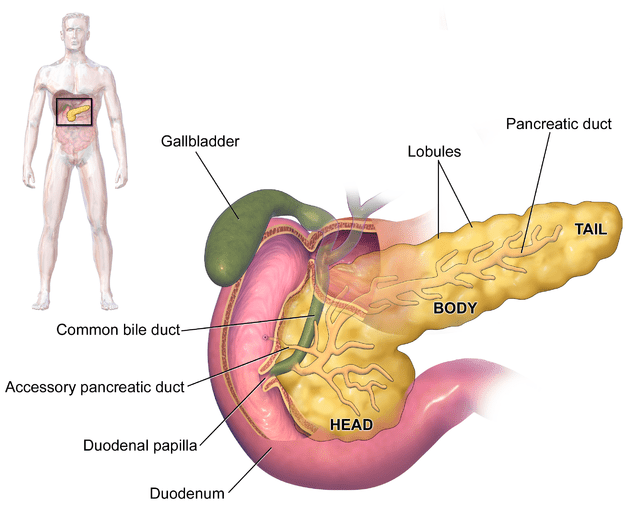Deep within the intricate framework of the human anatomy resides an extraordinary organ essential for our well-being: the pancreas. Despite its unassuming size, the pancreas is a hub of activity, orchestrating vital functions crucial for digestion, metabolism, and overall health. In this exploration, we delve into the remarkable functions of the human pancreas and its indispensable role in our daily lives.
Positioned discreetly behind the stomach within the abdominal cavity, the pancreas serves as a dual-purpose gland, acting both as an endocrine and exocrine powerhouse. This dual functionality highlights the pancreas’s adaptability and its significance in regulating various bodily processes.
Central to its function is the pancreas’s role in blood sugar regulation through the secretion of insulin and glucagon, pivotal hormones with opposing actions. Insulin, produced by pancreatic beta cells, facilitates the absorption of glucose from the bloodstream into cells, where it is utilized for energy or stored for future use. Conversely, glucagon, synthesized by alpha cells, prompts the liver to release glucose into the bloodstream when blood sugar levels dip, thus averting hypoglycemia.
Maintaining the delicate balance of blood glucose levels is paramount for overall health, with disruptions leading to complications like diabetes mellitus. Type 1 diabetes arises from the immune system’s assault on insulin-producing beta cells, causing insulin deficiency and erratic blood sugar levels. Meanwhile, type 2 diabetes stems from the body’s resistance to insulin’s effects, resulting in elevated blood glucose levels. These conditions underscore the pancreas’s crucial role in glucose homeostasis.
Beyond its endocrine functions, the pancreas acts as an exocrine gland, secreting digestive enzymes crucial for breaking down carbohydrates, proteins, and fats in the small intestine. These enzymes, including amylase, protease, and lipase, aid in digesting and absorbing nutrients when released into the duodenum in response to food intake.
Collaborating seamlessly with enzymes from other digestive organs, such as the stomach and small intestine, pancreatic enzymes ensure efficient nutrient breakdown. Impaired enzyme secretion can lead to malabsorption syndromes, characterized by nutrient deficiencies and symptoms like diarrhea and weight loss.
Additionally, the pancreas produces bicarbonate ions, essential for neutralizing acidic chyme from the stomach upon entering the duodenum. This alkaline environment optimizes pancreatic enzyme activity and safeguards the small intestine’s delicate lining from stomach acid damage.
Intriguingly, emerging research suggests the pancreas’s involvement in diverse physiological processes beyond glucose regulation and digestion. Studies hint at its role in appetite regulation, immune function, and tissue regeneration, with pancreatic hormones like ghrelin and somatostatin implicated in metabolic signaling beyond glucose control.
In summary, the human pancreas, though modest in size, is monumental in its impact on our health. From its pivotal role in blood sugar regulation to its indispensable contributions to digestion and beyond, the pancreas stands as a testament to the intricacies of the human body. As research continues to unveil its mysteries, our appreciation for the pancreas’s multifaceted functions only deepens, underscoring its irreplaceable significance in sustaining our well-being.

Leave a Reply